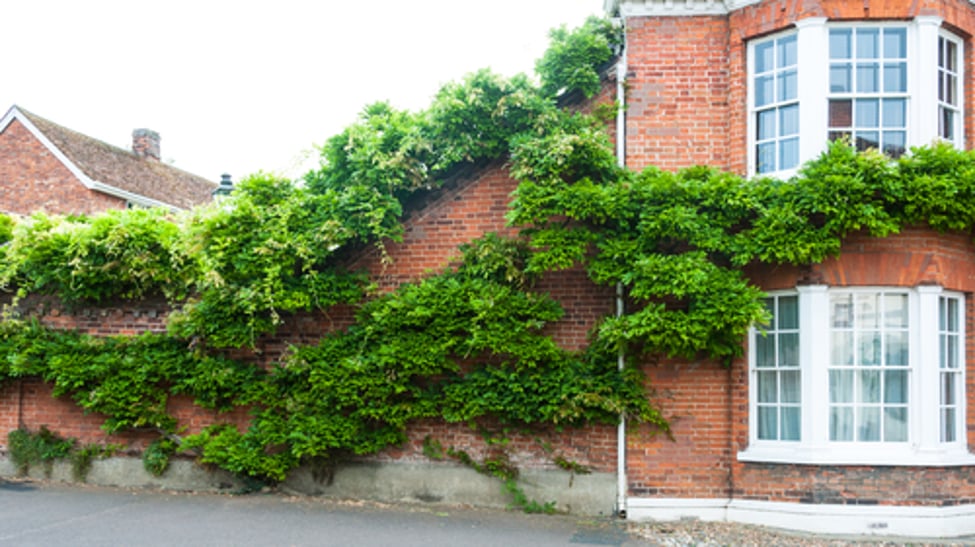Climbing ivy can be a beautiful enhancement to the exterior of a home. It is very easy to grow and provides a thin layer of insulation on walls. Heating and air conditioning costs can be slightly reduced as the ivy retains interior heat in the winter and keeps walls cooler in the summer. As with most plants and bushes, proper maintenance is required. Allowing your ivy to run wild without taking the time to prune and manage the growth is just asking for problems down the road.
While the ivy may be very pleasing to the eye, it can present hidden dangers, health hazards and very expensive repair bills. Maintaining climbing ivy does not need to be a time-consuming effort but it is a chore that must be done in order to protect your family and your property investment.
It is important to understand the disadvantages that can be presented with having uncontrolled climbing ivy.
The tentacles and tendrils, over a period of time, dislodge mortar and masonry.
The aerial roots may discolour brickwork and cause permanent staining.
Ivy can harbour pests, birds (and bird droppings), as well as other animals, providing easy access to the interior of your home.
A wall of ivy can trap dirt, debris, and moisture next to the exterior of the building.
Climbing ivy should NEVER be allowed to grow around windows, gutters, roof eaves, doors or aeration vents. In addition to the above caution, it is paramount that climbing ivy NEVER grow over vinyl siding or close to roof shingles. Ivy is an extremely strong plant and can cause severe structural damage by lifting the shingles and/or siding.
It is possible for the homeowner to remove out of control climbing ivy but this requires a great deal of caution. Never use chemicals or forcefully pull on the ivy as this can cause damage to the mortar. In the end, the most practical and safe means for removing the climbing ivy is to hire a landscaping specialist who has experience in this particular area.
When deciding to plant bushes or trees near the house you should always keep a distance of at least one to two feet from the point of planting to the building. Planting too close to your home can result in the roots cracking the foundation of the home and causing future damage to the structure of the building. Water issues can also occur in the basement when a plant is too close to the house and proper drainage can not occur.
- Submenu for Blog Details
- Home
- Communities
- Sellers
- Buyers
- Map Search
- Blog
- About
- Contact

